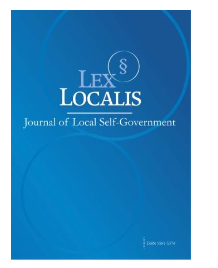THE INTERPLAY BETWEEN LEADERSHIP BEHAVIORS AND EMPLOYEE WELL-BEING IN EVOLVING HUMAN RESOURCE PRACTICES
DOI:
https://doi.org/10.52152/801839Keywords:
Leadership Behaviors; Employee Well-being; Human Resource Practices; Organizational Culture; Workplace PsychologyAbstract
In the contemporary landscape of organizational management, the relationship between leadership behaviors and employee well-being has gained unprecedented relevance. As human resource (HR) practices evolve to align with dynamic work environments, remote operations, and increasingly diverse workforces, the role of leadership in shaping psychological, emotional, and professional aspects of employee experiences has become more nuanced and critical. This research explores the multifaceted interplay between various leadership behaviors—ranging from transformational and servant leadership to transactional and laissez-faire styles—and their influence on employee well-being, encompassing job satisfaction, mental health, work-life balance, and engagement. Through a mixed-methods approach combining quantitative data from structured surveys and qualitative insights from in-depth interviews across multiple industries, this study examines how specific leadership traits such as empathy, communication, empowerment, and ethical decision-making contribute to—or detract from—employee well-being. The findings reveal that leadership behaviors rooted in emotional intelligence and authentic engagement consistently correlate with higher levels of employee morale, reduced stress levels, and increased retention.
In contrast, authoritarian or disengaged leadership styles are linked with burnout, absenteeism, and lower performance metrics. A significant focus of the research is also placed on how evolving HR practices—such as flexible work arrangements, diversity and inclusion initiatives, and wellness-oriented policies—mediate the relationship between leadership and well-being. The study underscores that leadership effectiveness is not static but deeply influenced by organizational culture, policy frameworks, and broader socio-economic changes, such as the impact of digital transformation and post-pandemic work models. The paper argues that for HR strategies to be genuinely employee-centric and future-ready, leadership development must be a foundational pillar, emphasizing not only operational efficiency but also the cultivation of supportive and psychologically safe workplaces. Furthermore, it highlights the reciprocal nature of the leadership–well-being dynamic: while good leadership enhances well-being, a workforce experiencing high well-being also enhances leadership outcomes through increased trust, collaboration, and feedback receptivity. In conclusion, this research provides actionable insights for HR professionals, organizational leaders, and policymakers to reimagine leadership development and employee wellness as interdependent goals. By integrating behavioral leadership frameworks with adaptive HR practices, organizations can foster resilient, inclusive, and high-performing environments that prioritize people as their most valuable asset.
Downloads
Published
Issue
Section
License
Copyright (c) 2025 Lex localis - Journal of Local Self-Government

This work is licensed under a Creative Commons Attribution-NonCommercial-NoDerivatives 4.0 International License.








